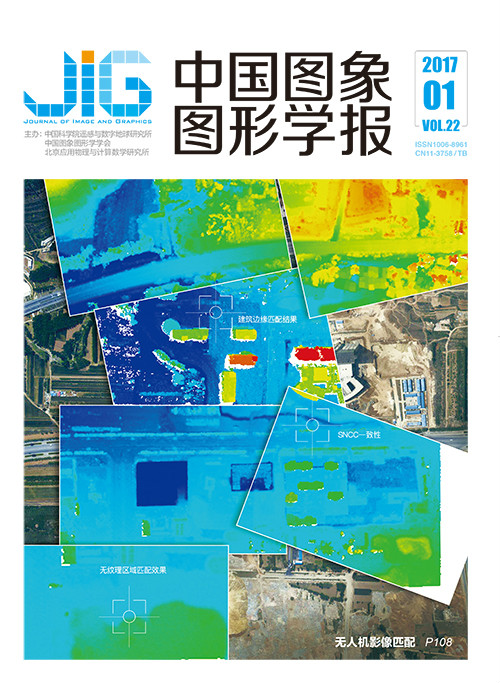
肺实质CT图像细化分割
摘 要
目的 由于肺部CT图像中各组织结构复杂、灰度分布不均匀,造成肺实质部分难以准确分割和提取。为了提高肺实质分割的准确率,本文提出了一种基于超像素的细化分割与模糊C均值聚类相结合的自动分割算法。方法 该算法充分利用肺部CT图像的灰度、纹理特征,同时为了正确标记超像素的分类,引入一种空间邻域信息来增强空间约束进而有效地解决灰度不均匀的问题,它能够对肺实质进行分割并除去其周围的主血管,然后利用形态学知识去除肺部的分支血管。结果 在临床患有四类疾病的患者CT图像数据集上采用改进的图像特征,使得肺实质分割的准确率提高了0.8%。同时,算法准确率提高到99.46%。结论 实验结果表明,本文算法能够实现肺部CT图像肺实质的自动细化分割,结果准确适用。该算法鲁棒性好、速度快,是一种精确有效的自动肺实质分割方法。
关键词
Refining segmentation algorithm for lung parenchyma CT image
Qu Yan1, Wei Benzheng1, Yin Yilong2, Chu Peipei1, Cong Jinyu1(1.College of Science and Technology, Shandong Traditional Chinese Medicine University, Jinan 250355, China;2.School of Computer Science and Technology, Shandong University, Jinan 250101, China) Abstract
Objective Lung cancer has become one of the malignant tumors with the fastest growing morbidity and mortality, bringing great threats to human health. Studies have shown that early detection of lung cancer accompanied with early treatment can improve the survival rate and prognostic conditions. Lung computed tomography (CT) images mainly include the lung parenchyma, air outside the lung parenchyma, and checking bed. Gray inhomogeneity always exists because the noise and bias field are strong in lung CT images, and the organizational structure is complex. Consequently, the lung parenchyma is difficult to effectively segmented and extracted in the field of auxiliary technology research for lung disease diagnosis. This study proposes an automatic segmentation algorithm based on superpixel refining segmentation combined with fuzzy c-means clustering to improve the accuracy of lung parenchyma segmentation. Method First, superpixel division is achieved, and refining segmentation is conducted on superpixel regions where an error occurs. Second, the fuzzy c-means clustering algorithm is used based on specific characteristics. Finally, the superpixel regions that share the same classification are merged, and the final segmentation results are obtained. The algorithm can use the gray and texture features of lung CT images. The spatial neighborhood information is introduced to enhance the space constraints for generating the correct superpixel classification, thereby effectively solving the problem of gray inhomogeneity. The algorithm can carry out the segmentation of lung parenchyma, remove the surrounding main blood vessels, and use morphological knowledge to remove branch blood vessels in the lungs. Result In clinical patients with four types of disease on the CT image data set with improved image characteristics, the lung parenchyma segmentation accuracy is increased by 0.8%. The algorithm accuracy is also increased to 99.46%. Conclusion Experimental results show that the proposed algorithm can effectively overcome the interference of bias field and noise during image segmentation. Therefore, this algorithm can achieve the automatic refinement of lung parenchyma segmentation in lung CT image efficiently. The results are accurate and applicative. The algorithm has good robustness, and it is a fast, accurate, and effective automatic lung parenchyma segmentation method.
Keywords
|



 中国图象图形学报 │ 京ICP备05080539号-4 │ 本系统由
中国图象图形学报 │ 京ICP备05080539号-4 │ 本系统由